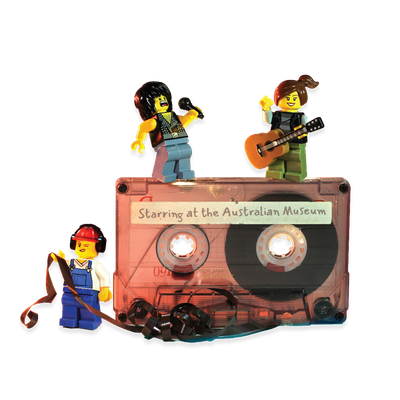Your search returned 31 results
By Page Type
By Tag
- All
- fish (966)
- blog (696)
- fishes of sydney harbour (401)
- First Nations (299)
- Blog (236)
- AMRI (169)
- archives (164)
- Eureka Prizes (146)
- Aboriginal and Torres Strait Islander (135)
- insect (126)
- Ichthyology (124)
- geoscience (109)
- minerals (102)
- climate change (99)
- podcast (94)
- Fish (91)
- Anthropology (89)
- International collections (80)
- Minerals Gallery (78)
- wildlife of sydney (78)
- Labridae (77)
- frog (74)
- gemstone (70)
- photography (66)
- history (64)
- Mollusca (60)
- gem (59)
- staff (59)
- Birds (56)
- Gems (56)
- Indonesia (56)
- education (56)
- shark (55)
- AMplify (54)
- people (53)
- earth sciences (50)
- exhibition (50)
- past exhibitions (50)
- Gobiidae (48)
- sustainability (46)
- Pomacentridae (45)
- Serranidae (44)
- lifelong learning (42)
- science (42)
- Earth and Environmental Science (41)
- Syngnathidae (41)
- Ancient Egypt (40)
- Bali (40)
- bird (40)
- dangerous australians (40)
-
Herbivorous heavyweights
https://australian.museum/learn/dinosaurs/the-dinosaur-giants-club/One group of plant-eaters grew to become the biggest land animals ever. These were the sauropods - impressive long-necked, four-legged giants.
-
Investigating the Winton Trackway
https://australian.museum/learn/teachers/learning/winton-trackway-poster/Become a palaeontologist and investigate fossilised dinosaur footprints.
-
Dinosaur - Mamenchisaurus youngi
https://australian.museum/learn/dinosaurs/fact-sheets/mamenchisaurus-youngi/Mamenchisaurus youngi was a gigantic herbivore that lived around 150 million years ago and had one of the longest necks of all known dinosaurs.
-
Lightning Beast - Ornithopod dinosaur
https://australian.museum/learn/dinosaurs/fact-sheets/fulgurotherium-australe/Fulgurotherium australe was a small ornithopod dinosaur from the Early Cretaceous of Australia. Fulgurotherium, known from Lightning Ridge in New South Wales and perhaps from Victoria, was one of the first Australian dinosaurs to be scientifically described.
-
Dinosaurs living together
https://australian.museum/learn/dinosaurs/dinosaurs-living-together/Did dinosaurs live on their own or in groups? There is good evidence that many did form social groups. Plant-eaters would have found safety in numbers, while predators may have hunted in packs and benefited from co-operation.
-
Dinosaur lifecycles: from go to woe
https://australian.museum/learn/dinosaurs/dinosaur-lifecycles/From birth to growth and death, the fossil record preserves fascinating hints about the lifecycle of a dinosaur.
-
Dinosaurs on the attack
https://australian.museum/learn/dinosaurs/dinosaurs-on-the-attack/The ability to overpower another animal requires a combination of strength, speed, balance and weaponry. Most theropods relied on such skills and assets to find food, although some appeared to have adapted to life as filter-feeders or plant-eaters.
-
Defence and signalling
https://australian.museum/learn/dinosaurs/life-among-the-plants/It sounds like a fancy dress party gone wrong: horns, dome-heads, crests, frills, noise, head-butting and rivalry. But they are really about using your head and some plant-eating dinosaurs excelled at it.
-
Dinosaur senses
https://australian.museum/learn/dinosaurs/dinosaur-senses/Both plant-eating and meat-eating dinosaurs needed their senses to find food. How do you search for tasty plants to eat while remaining aware of any stalking predators? How do you find your plant-eating prey when they may be camouflaged or in hiding?
-
Carnivore teeth and diet
https://australian.museum/learn/dinosaurs/meat-eating-dinosaurs/These are the sharp-toothed, ferocious meat-eating dinosaurs of popular imagination - the ultimate predators built purely to kill. Or are they? Collectively known as theropods, they range from bus-sized to chicken-sized.
-
Discover more
2025 Australian Geographic Nature Photographer of the Year
Special exhibition
Free entry
Now open -
Discover more
Unfinished Business
Special exhibition
Free entry
Now open -
Discover more
Wansolmoana
Permanent exhibition
Free entry
Open daily -
Find out more
Burra
Permanent kids learning space
Free entry
10am - 4.30pm![]()
-
Discover more
Minerals
Permanent exhibition
Free entry
Open daily![]()




